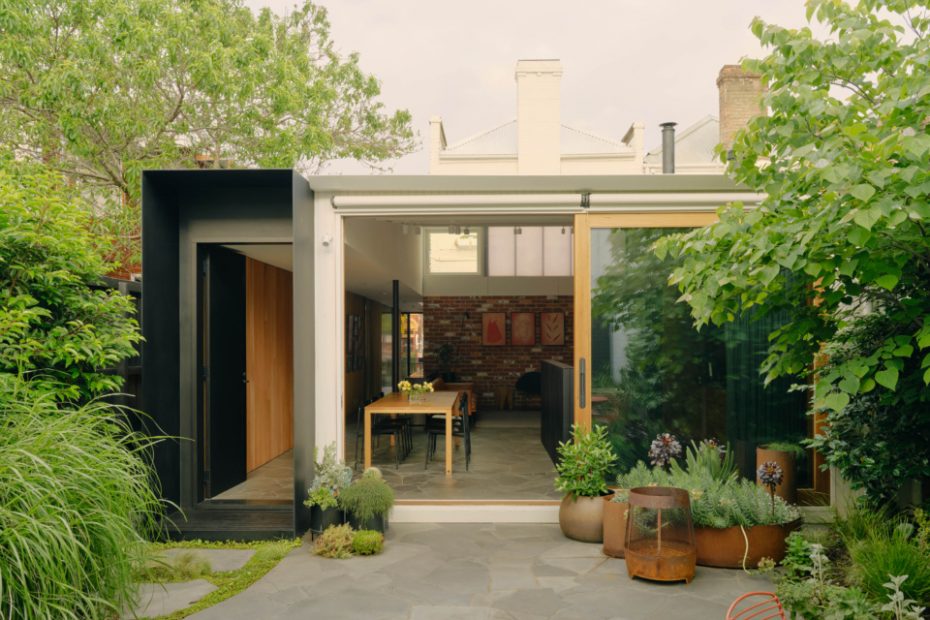How This Quintessential Fitzroy Terrace Makes The Most Of A Narrow Laneway
Architecture
Inside Fitzroy Laneway House designed by Andrew Child Architect.
A view of the studio addition built at the rear of the home.
Slate crazy paving flooring brings a playful edge to the central courtyard garden and living room.
The dining area is made more spacious thanks to the expansion into the former laneway.
Timber-lined walls fills the interiors with warmth.
The grand kitchen is the heart of the home.
An exposed brick wall nods to the property’s past.
One of the chic green bathrooms.
The homes heritage character has been woven into the modern redesign.
A glamorous bathtub with views into a courtyard.
Inside Andrew’s son’s music studio.
Lush plantings turn the former unused strip of land into an inviting entryway.
The view of the home from the street.
The black door opens the re-purposed laneway.
Architect Andrew Child had a bit of a checklist in mind before he began redesigning a ‘derelict’ Fitzroy terrace into the ideal home for his family of three.
‘I wanted a home in which we would feel relaxed. It needed to be robust, adaptable — with some elements of fun,’ Andrew says. ‘I wanted it to feel like it couldn’t be anywhere else but Fitzroy.’
The existing single-fronted Victorian was unliveable at the time. It was also quite narrow, but the property included an old laneway beside the home, which Andrew realised could be repurposed as part of the house itself to create spaces that feel ‘less cramped’ than the average terrace.
The 2.5-metre-wide strip was used to create a dedicated series of practical ‘service’ spaces within the floorplan, including an entry walkway, laundry, and storage cupboards. It’s all hidden behind a small, black, thin addition that doesn’t detract from the white and elegant facade.
This also cleverly allowed for an expansion of the living areas, reserving these larger areas as the heart of the home as a reflection of where the family spends most of their time. Inside, only the front rooms were retained in their original form and turned into bedrooms, while the rest of the house was significantly altered.
‘There’s a myriad of these seemingly ad-hoc laneways in Fitzroy, which contribute greatly to the feel of the suburb,’ Andrew adds. He used this as inspiration for the renovation’s material palette of recycled red brick as a nod to the past, bringing the laneway’s edgy character into the contemporary interiors.
Timber floorboards on the walls, black-painted steel joinery and stainless steel bench tops are layered amongst the crazy paving slate floors that continue from the living into the sunny courtyard, softened by greenery.
‘These were selected to give the new spaces a more robust, external, and less formal feel than the spaces within the existing house,’ he explains. ‘I like the quirks of the existing house — the exposed brickwork, graffiti, the old elements like the doorways and fireplaces which we’ve been able to use in fun and interesting ways.’
A new 71-square-metre building at the rear of the property was also crucial in enabling a ‘number of future living and/or working scenarios’. Upstairs holds a light-filled office and a bathroom, and downstairs is currently used as music studio for Andrew’s son. But with its own private street access, the private addition can easily be converted into an apartment.
‘Now, it provides a comfortable and stimulating living and working environment for us, and will be able to adapt to our changing needs well into the future. We each have our own spaces to live and work, but can come together when it suits. It’s also a great place for a party — and we’ve had a few.’
